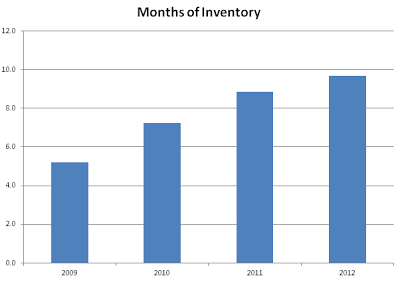Top of the this list--some thank you's.
Thank you to Leo S for keeping up with posts lately, especially the market update posts we keep coming for each week.
Thank you to
Marko Juras for bucking the trend of agents pretending this blog doesn't exist and providing us with the most up to date market data in as close to real time as practical.
Thank you to
Ben Rabidoux, for
the shout out calling this blog "solid." For a guy who turned academia and blogging into what I hope is a lucrative private sector gig, that's a solid shout out. Word. Appreciated.
And finally, thank you to the commentators, because you're the reason why anyone would ever call this blog solid.
And now on to that commentary...
The market in Victoria is the pits. Even if the valuation numbers aren't showing it yet. On a personal note, I have mixed feelings. Having written about the market as long as I have, I would have expected more feelings of schadenfreude over the coming months. I don't. And I very likely won't.
Since leaving town for sunnier pastures, though arguably slightly, and only so very slightly, colder, I've become detached, let's call me an objective, no longer emotional, observer. The Victoria market is far less interesting as a result. Dare I call it boring. The only real attachment I have to it now is the experience of others.
I have a close relative who tried, unsuccessfully, to sell an over priced house in the summer before leaving town for the winter. I laughed out loud when they told me they were pulling it off the market for the winter to try again in the spring--only because they blamed the slow fall market for the lack of showings and not their 25% premium to the current market state asking price.
I have another friend who's joined me in my new city with family in tow for a new employment opportunity, leaving an unsold property temporarily rented out behind because, again, no offers due to unrealistic selling price expectations... I hold the agent partly responsible for suggesting the slow market, and not the price, as the culprit.
Both of these folks, should they sell at today's true market value, would still walk away with a hefty sum more than they'd ever spent on their home regardless. Some could call it greed. I simply call it market ignorance.
Another friend sold their house. Not without complications. And not without compromising on their price expectations. But sold it they did and they couldn't be happier. They'll be leaving town too come spring.
Intertwined with the current market state, two other folks close to me make their living working on homes. Turns out few are spending money making improvements these days. Meanwhile the municipalities complicate matters further with fee hikes, red tape and regulations that can only be described as adding massive increases to the costs of what should be simple renovations. If I owned a trades related company in Victoria right now I'd be screaming at the newspapers to get on this story in a hurry before my business failed. Unfortunately, that screaming would most likely fall on deaf ears until businesses do fail and good people start hurting bad.
No one wants to see people hurting--no matter how many times you had to listen to them preach about their real estate winnings in the past.







